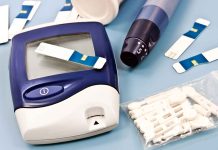
SSDI: An A-Z Guide To Qualifying, Applying, And More
(AscendHealthy.com) – The SSDI program began in 1956, enrolling 150,000 workers in the first year when benefits were available to those 50 and older. The government made it easier for more people to qualify and as the population grew, so did the number of people who wanted to default. In 2016, approximately 10.2 million Americans received $11.3 billion in disability benefits. While those numbers may seem high, only 48% of first-time workers claim Social Security Disability (SSDI). In most cases, this is due to a lack of proof of impairment or incorrect information in the required documents.
This is why many people applying for SSDI benefits hire a consultant or attorney to help them. People who think they may qualify for SSDI should talk to a professional before filling out an application.
What is SSDI?
Social Disability Insurance (SSDI) is a social security program that covers workers who become sick or injured and cannot work. SSDI does not require a person to pay a premium to an insurance provider. Instead, employees pay Social Security taxes with each paycheck, with a percentage going into the SSDI fund.
Employees can apply for SSDI pay if they have a disability. These payments can be made to them for the period of their disability until they reach the age when they start receiving a pension or regular social security benefits.
How does SSDI Differ from SSI?
The difference between SSI and SSDI is that SSI is based on a person’s income, while SSDI is based on debt. Depending on age, a person must earn enough earnings to qualify for SSDI.
To qualify for SSI, a person must be retired, and their income must fall under the SSA income guidelines. Individuals on SSI qualify for Medicaid in most states, but those on SSDI automatically qualify for Medicare after two years of SSDI benefits.
Who Qualifies for an SSDI Program?
The following persons are eligible for SSDI:
Individuals with a Sufficient Amount of Work Credits
Employment credits are earned by earning a certain income and paying social security taxes. Individuals receive one credit for every $1,510 income, plus four credits per year. The amount of work earnings required to qualify for SSDI varies depending on the age at which a person becomes disabled. Generally, individuals are eligible for SSDI if they have earned at least 20 credits ten years before becoming unemployed.
The employment credit threshold for people with disabilities decreases when they are young. If they are between 24 and 31 years of age, they can qualify if they have worked for half the time between 21 and the start of their disability. A chart showing how many credits are needed if you are between the ages of 31 and 62.
Persons Unable to Participate in Substantial Gainful Activities
A “gross gainful employment” (SGA) is defined as earning a minimum wage per job (other sources of income are not counted). The SGA level is always different. The SGA requirement for the blind and non-blind in 2022 will be $2,260 and $1,350 per month, respectively. The SGA does not apply to SSI payments for the blind, but it does apply to Social Security payments and SSI payments for people who are not blind and have disabilities. Individuals with a monthly income of more than $970 are not eligible for SSDI.
They Must Fulfill the Criteria for Being Incapacitated
Applicants must have a long-term medical condition that prevents them from working to qualify for SSDI. It didn’t matter what caused them trouble; it could be an accident, illness, or something else. What matters is that they meet the SSA’s strict and narrow definition of failure: they can’t complete the work they are supposed to do. This includes their jobs before their disability and any other jobs they are eligible for.
How to Apply for SSDI
Eligible individuals can apply for SSDI online or by contacting the SSA at its toll-free number, 1-800-772-1213, during official business hours.
How does the SATB decide on an application?
The Social Security Administration sends applications to the government agency that handles disability determinations. The government uses medical and emergency phones that call doctors and other health care facilities for medical records. People applying for SSDI may be given paperwork to complete or may be asked to undergo a physical or medical examination by a government agency. People applying for SSDI are not required to take public exams or tests.
What to do if an SSDI Application is Rejected
Here are ways to protect your rights:
Review: If the Social Security Administration denies a person’s claim, they will be given a letter explaining why. They have the right to request an audit and review the entire file.
Appeal: Individuals can appeal the decision and request a hearing if their request is denied after a reconsideration request. After the hearing, the administrative law judge decides the case.
Conclusion
If you have a medical or mental health concern that means you will be out of work for at least a year, you should talk to a doctor about what you believe to be your mental capacity or body. If your doctor thinks you have a disability that prevents you from working, you can file a claim with the Social Security Administration at your local office or online. Please do not delay because resolving the SSID request takes a lot of time, and your health will be impaired.
Copyright 2022, AscendHealthy.com




















